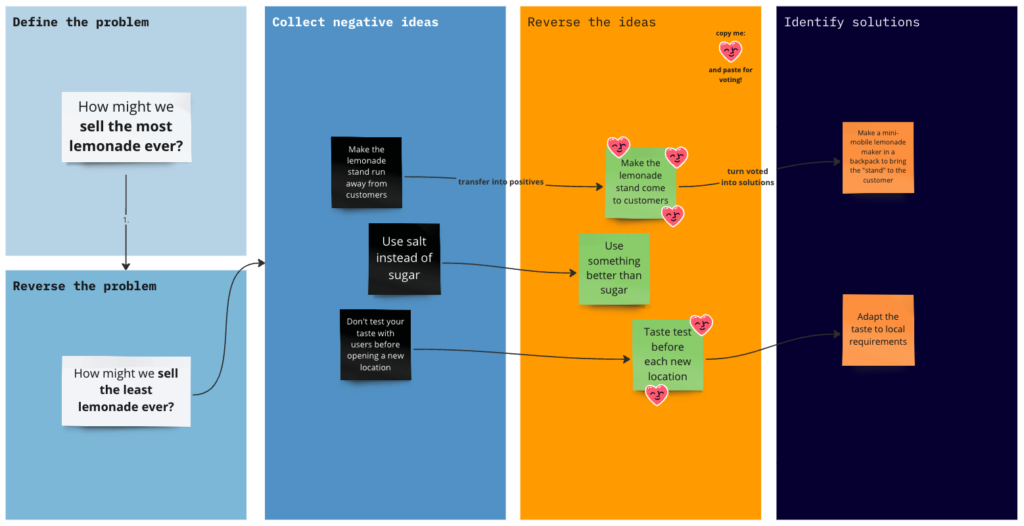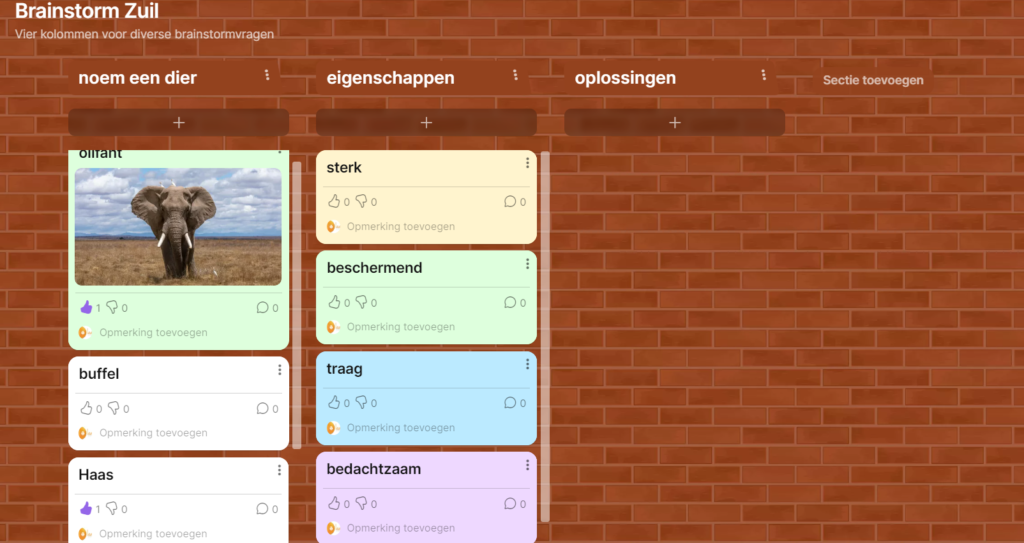In our previous blog we talked about online brainstorming: what it is, why it's great and how difficult it can sometimes be. In this article, we share tips on how to perfectly prepare for your next brainstorming session.
Preparation consists of 4 main steps:
- Formulate a strong starting question
- Choose a creative brainstorming method
- Choose a brainstorming tool and prepare your session
- Inform the participants
1. Craft a powerful starting question
Start your brainstorming with a question like "How can we ..." or "How do we ensure ...". For example, "How do we ensure more visitors to our website? Here are 4 tips for a strong starting question:
- Formulate your starting question positively: don't use words like "not" or "none.
- Focus on one thing at a time: discuss a defined topic.
- Be specific: avoid questions that are vague or overly broad in interpretation.
- Keep your question simple: discard jargon and abstractions.
2. Choose a creative brainstorming method
Choose activating work forms for your perfect brainstorm. As we described in the previous article, it can be quite difficult for participants to really think "out of the box. By choosing a challenging work format, you can help them with this. Here are some inspiring examples:
Becoming aware of unconscious assumptions
This is a creative technique for uncovering hidden biases and assumptions. How it works. After presenting the problem or question, have the group bainstorm possible solutions. Then it's time to collectively look for the hidden commonalities, which represent deep-seated assumptions, such as "let's not spend too much money" or "we don't have time for that." Finally, the group explores what happens when these biases are removed.
Wrong answers
The challenge is to come up with incorrect answers. It seems strange, but it works! For example: the question is how to encourage people to take a bike instead of a car more often. Then the task is to come up with wrong answers. This leads to bizarre ideas such as putting free cars everywhere, establishing bike-free zones and charging bike road taxes. Then you can turn these wrong answers around and apply them for realistic solutions, such as creating residential areas with no car parking and subsidizing bicycles. By thinking "out of the box" like this, you come up with surprising ideas.
Equations
During this brainstorming method, you compare the topic with characteristics of animals, fairy-tale characters or famous people, for example. The method is as follows: Each person names an animal, for example. Then choose the animal that is most different from the current issue. Write down all the unique characteristics. What are the strengths? What are the weaknesses? Try to identify at least ten characteristics. Finally, let your imagination run wild and collectively consider how the characteristics of the chosen animal can help generate creative solutions to your problem. This brainstorming method is not only inspiring, but also extremely fun to do!
3. Choose a brainstorming tool and prepare your session
There are several whiteboard tools are available to facilitate effective brainstorming sessions, such as Miro, Mural and Padlet. Each of these tools offers various templates for different brainstorming methods. This saves you a lot of time and effort. Why reinvent the wheel yourself?
A template for the 'Wrong Answers' method in Miro:
An example of a brainstorm in Padlet using the Equations method:
4. Inform participants
Send participants all necessary information for the brainstorming session well in advance, including login information. If there is background information that participants need to review, send it along immediately via email. Also share the session agenda in advance so everyone is aware of what to expect.
And now?
Have you prepared your session to perfection? Great! In our next blog finally, we will dwell on the perfect execution of your brainstorm.






